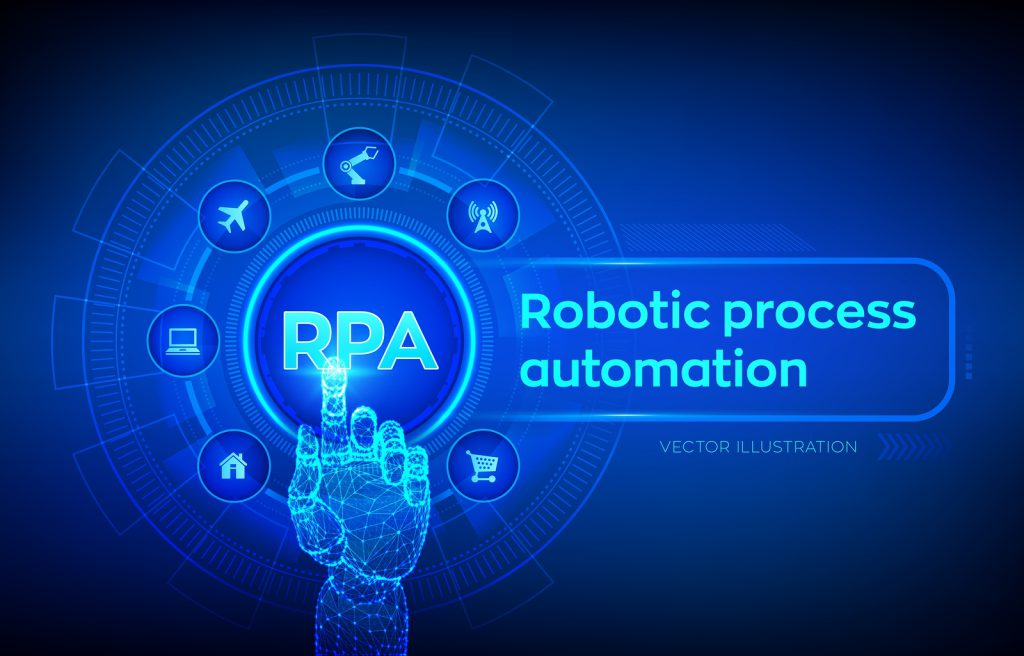5 ways to ensure a successful rollout of RPA

RPA, also known as Robotic Process Automation, is the term used to describe software-based, automated “bots” that can be used to carry out high volume, repetitive workplace tasks — thereby freeing up human employees to focus on other, more important work.
Most agree that RPA is a game-changer in many ways, from time saved to improved workplace morale from employees who no longer have to carry out these tasks. Examples of RPA can range from data entry to processing orders.
But how do you ensure that your implementation of RPA goes well? Here are five areas to consider that are critical when it comes to a successful implementation and rollout of robotic process automation.
#1. Select the right processes you want to automate
So you want to incorporate RPA into your business? That’s great news. But which processes are you going to automate? This is an important question because, as varied as the potential use cases of RPA might be, it’s not good at everything. RPA tools fit repetitive tasks that are carried out at both high volume and the same way every time.
RPA vendors can advise on which processes can be effectively handled by RPA, which includes methods of monitoring the current tasks being carried out by employees and identifying the best candidate tasks for automation. Once the right processes have been identified, you can then begin developing and deploying the RPA bots.
#2. Choose the right vendor
The benefit of RPA is that it allows you to carry out certain tasks without humans having to be in the loop. But choosing the right humans (read: vendors) to help deliver those RPA tools in the first place is essential. Areas to consider when assessing a possible RPA vendor includes their ability to offer bots that can scale in order to deal with increases or decreases in the volume of given tasks, the amount of time and the associated cost they quote in order to deploy the bots to begin with, the audit trail that will allow bot performance to be monitored, their history with governance, and previous customer testimonials.
Select the right vendor and it could, to quote Casablanca, be the start of a beautiful friendship — or, at the least, a rewarding working relationship.
#3. Prepare your employees
It’s easy to think that your employees are going to be as excited as you are, the business owner, about RPA. After all, it’s a technology that’s designed to automate the mundane, repetitive tasks that no one wants to do. Right?
In reality, it’s not unexpected to find a bit of employee pushback about RPA. That may well be rooted in concerns about what automation is likely to mean for the jobs of the flesh-and-blood people you have working for you. Some might worry that, with bots that work 24/7 without taking a break, you may be looking to make employees redundant. A core part of your RPA rollout should be about making clear what RPA means for them — from time savings to more opportunities to focus on other, value-added tasks within the company.
As great as RPA is, it’s certainly not a replacement for humans in every capacity. Make sure that you dedicate some time to making this clear.
#4. Implement the solution
With the right process to be automated, the right vendors signed up, and your employees firmly on board, you then need to implement and deploy the RPA solution. To avoid running into problems, make sure that this is done in an orderly fashion — complete with the road map, input from stakeholders, and a pilot scheme that allows you to check everything is working as expected.
Ensuring that the deployment phase is carried out appropriately will help make the RPA deployment seamless and trouble-free. Since first impressions matter (especially if you’re having to make the case for RPA to other decision-makers), it’s vital that the deployment takes place in the best possible scenario.
#5. Measure, measure, measure
One of the best aspects of RPA tools is that it makes it far easier to carry out workflow analytics to measure how well it’s working for you. To make this easier, ensure that you have already decided upon the key performance indicators (KPIs) ahead of time that will tell you how well the solution is working.
To measure the value proposition offered by RPA, you may want to look at the speed and productivity with which it can carry out certain tasks. Alternatively, you might be more interested in accuracy and reducing error rates, or compliance and the ability to stick to rules and ensure that these are followed. Perhaps it’s a combination of all of these. Knowing what it is that you’re hoping to achieve with RPA will make it easier to objectively assess whether it has been successful or not. It’s key to the successful implementation of RPA.
Research Snipers is currently covering all technology news including Google, Apple, Android, Xiaomi, Huawei, Samsung News, and More. Research Snipers has decade of experience in breaking technology news, covering latest trends in tech news, and recent developments.









